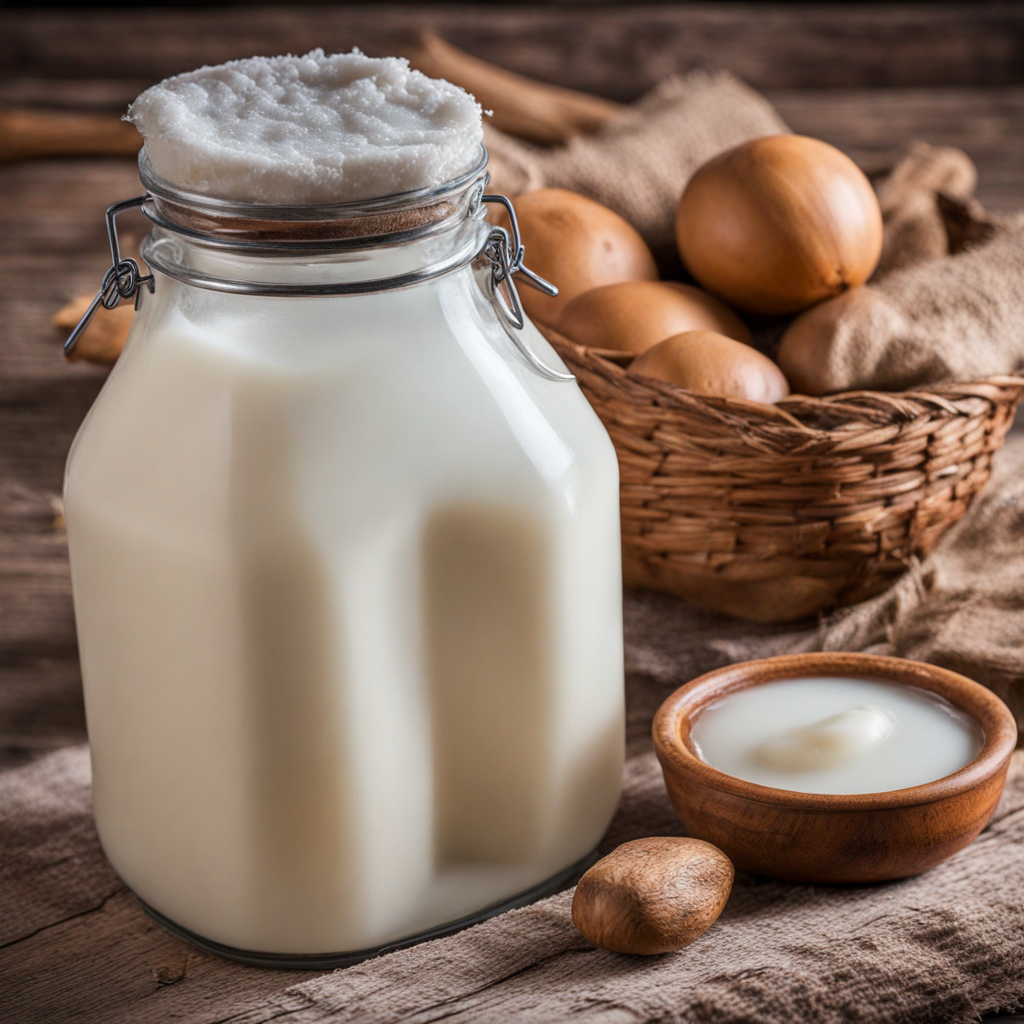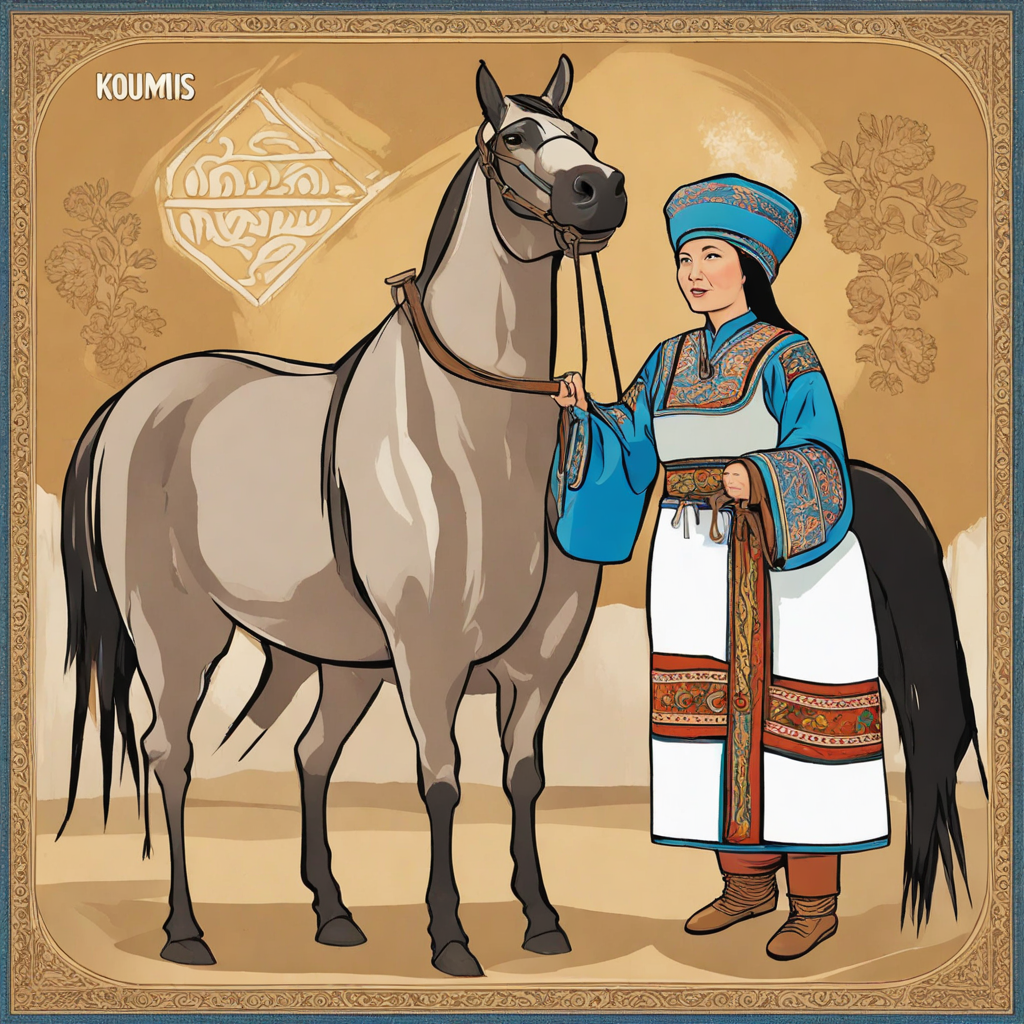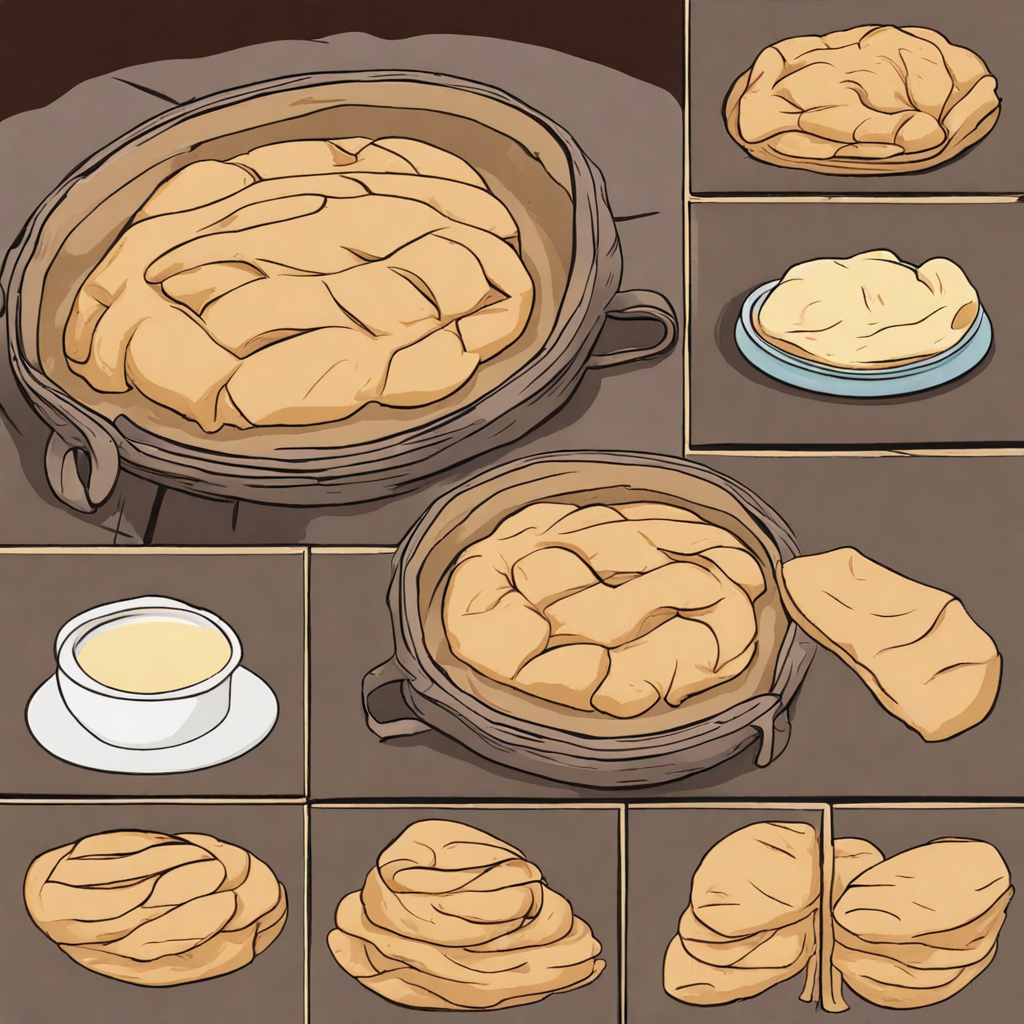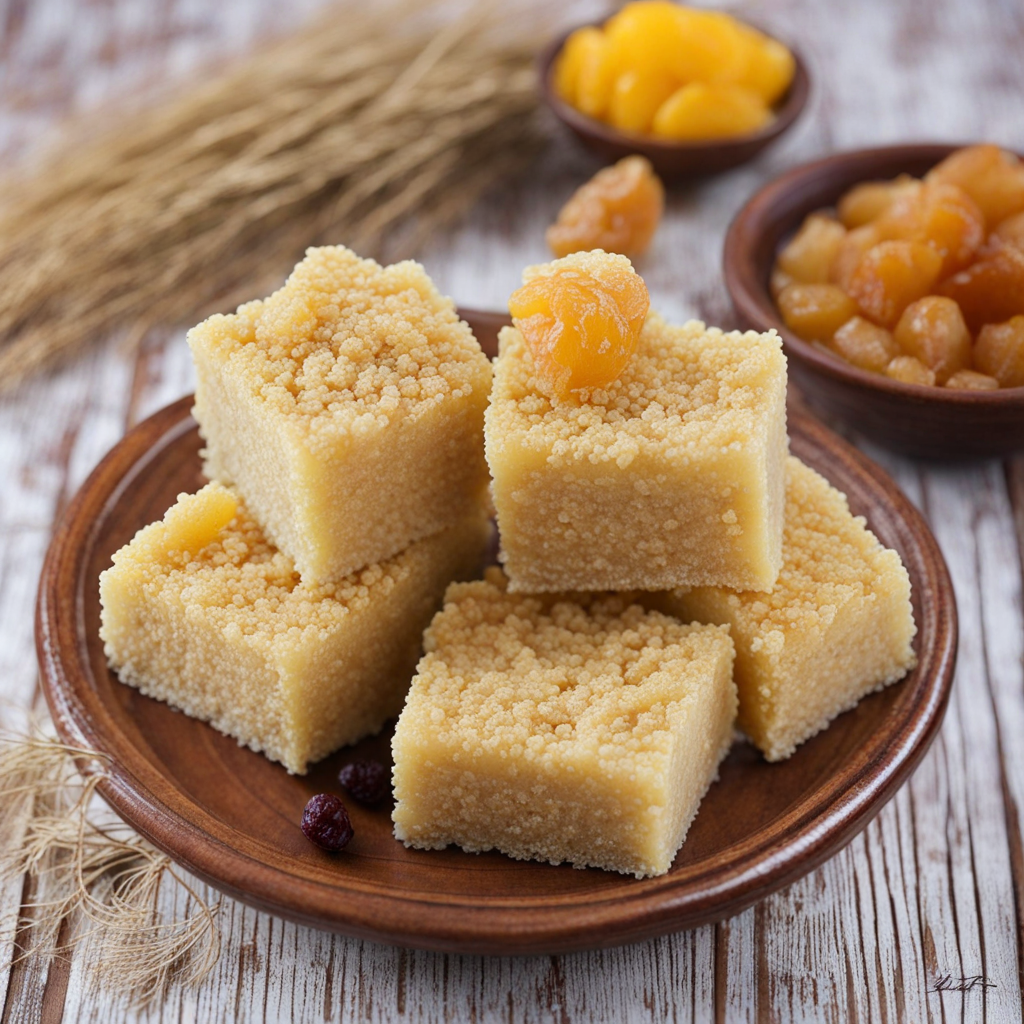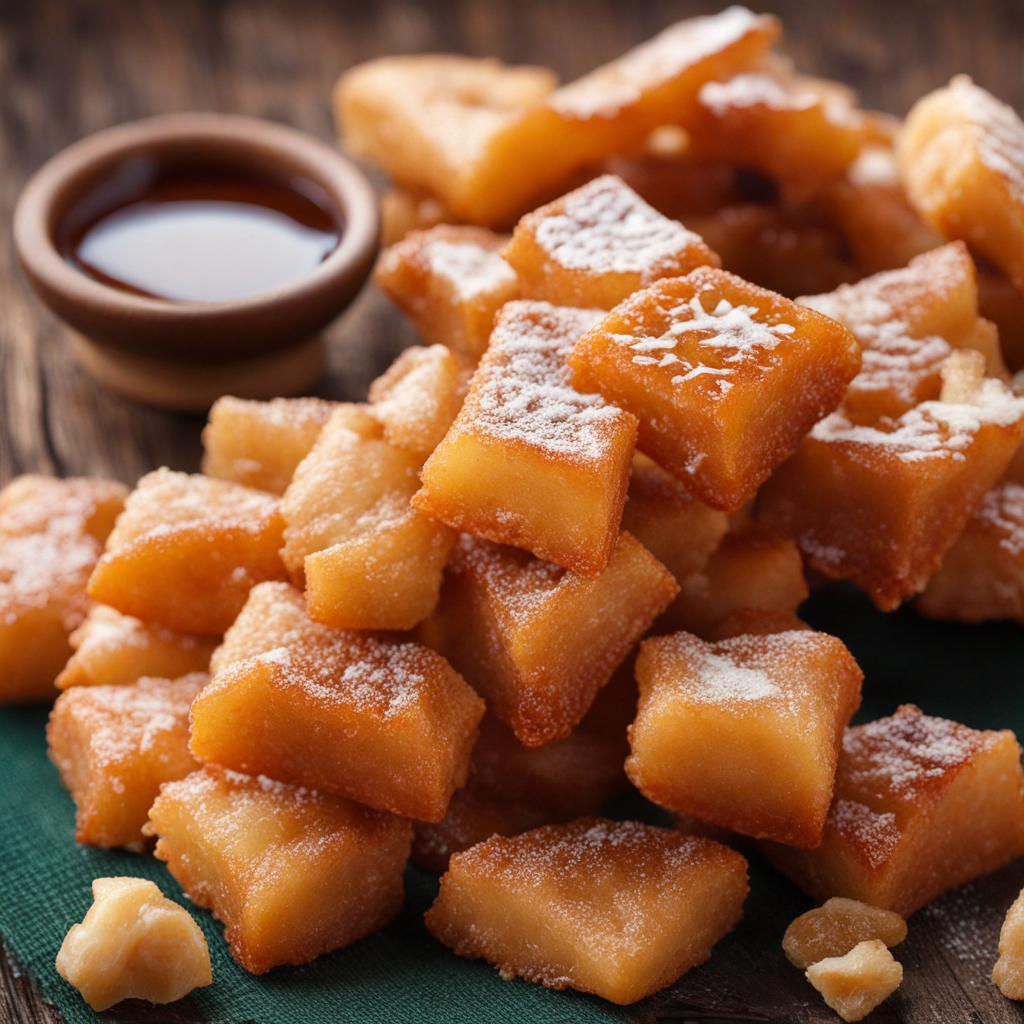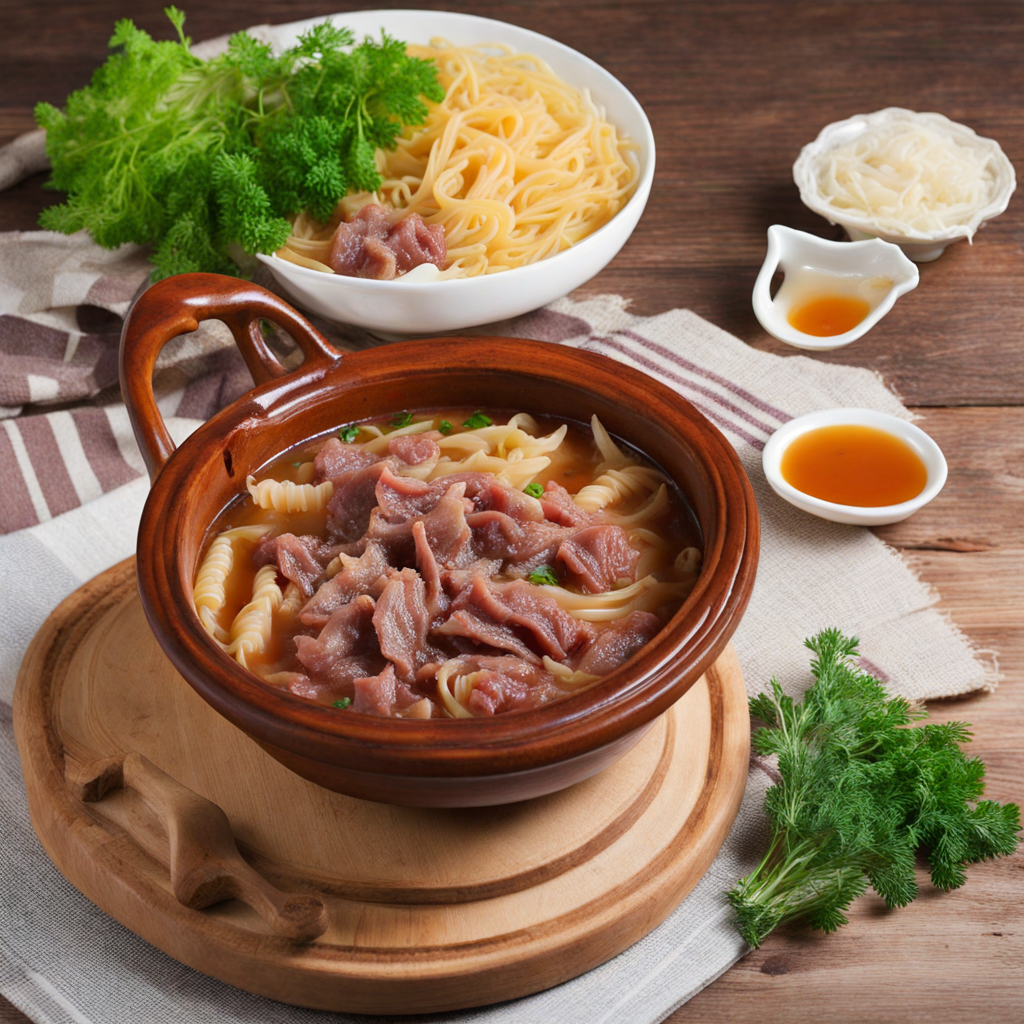Koumiss
Koumiss is a traditional fermented dairy beverage originating from the Central Asian steppes, particularly associated with the nomadic cultures of Kazakhstan. Made from mare's milk, this unique drink has a slightly alcoholic content due to the fermentation process, which imparts a mildly tangy flavor profile. The texture is creamy, yet light, making it refreshing and easy to consume. Its effervescence, a result of natural carbonation, adds to the overall sensory experience, giving it a unique mouthfeel that sets it apart from other dairy products. The production of koumiss involves a specific fermentation technique where the milk is inoculated with a mix of lactic acid bacteria and yeast, allowing it to ferment over several days. This process not only enhances the flavor but also increases the drink's nutritional value, providing a rich source of vitamins, minerals, and probiotics. Traditionally, koumiss is enjoyed in large, communal bowls or cups, often accompanied by bread or local dishes, making it a social beverage that brings people together. Koumiss is not just a drink; it carries cultural significance in Kazakh society, reflecting the nomadic lifestyle and the connection to horses, which are central to Kazakh heritage. Its health benefits, including aiding digestion and boosting immunity, have made it a beloved staple in the region. For those looking to explore new tastes, koumiss offers a delightful blend of creamy, tangy, and slightly effervescent flavors that transport you to the vast steppes of Kazakhstan with each sip.
How It Became This Dish
Origin of Қымыз Қымыз, or kumis, is a traditional fermented dairy product made from mare's milk that has its roots deeply embedded in the nomadic cultures of Central Asia, particularly in Kazakhstan. The origins of this beverage can be traced back thousands of years, with evidence suggesting that the consumption of mare's milk and its fermentation into a drink began during the time of the Scythians, a group of nomadic tribes that roamed the vast steppes. Ancient manuscripts and historical texts, such as those by Herodotus, reference the use of mare's milk among these tribes, highlighting its significance in their diet and lifestyle. The process of making қымыз is an ancient art form that involves fermenting fresh mare's milk using specific cultures that include lactic acid bacteria and yeast. This fermentation process not only preserves the milk but also enhances its nutritional value, transforming it into a slightly alcoholic, effervescent beverage that is rich in vitamins, minerals, and probiotics. The unique properties of mare's milk, which is higher in fat and sugar compared to cow's milk, contribute to the distinct taste and health benefits of қымыз, making it a staple for the nomadic peoples who relied on it for sustenance during their travels across the harsh steppes. \n\n Cultural Significance of Қымыз In Kazakhstan, қымыз is not just a food item; it plays a crucial role in the cultural identity and social practices of the Kazakh people. Traditionally, it is considered a symbol of hospitality and generosity. Offering a guest a bowl of қымыз is a sign of respect and honor, reflecting the deep-rooted customs of sharing food and drink. It is often served during significant events such as weddings, funerals, and other communal gatherings, reinforcing its status as a drink of celebration and remembrance. Moreover, qymyz has been intertwined with the spiritual beliefs of the Kazakh people. It is often associated with health and vitality, believed to have healing properties and to promote overall well-being. In traditional medicine, it was used to treat various ailments, and even today, it is recognized for its health benefits, including its ability to boost the immune system and improve digestion. The ritual of preparing and consuming қымыз is often accompanied by songs, storytelling, and other cultural expressions, further enriching its significance in the social fabric of Kazakh life. \n\n Development Over Time The production and consumption of қымыз have evolved considerably over the centuries. Initially, it was made exclusively by nomadic tribes who relied on the natural fermentation processes that occurred in leather bags known as "saukele." These bags, made from animal skins, allowed for the movement and aeration necessary for fermentation. As Kazakhstan underwent changes during the Soviet era, with forced sedentarization and collectivization, the production methods of қымыз adapted to fit new agricultural practices. During the Soviet period, efforts were made to commercialize and standardize the production of қымыз. State-run farms began to produce the beverage on a larger scale, and it became available in urban centers. This shift not only increased accessibility but also led to a diversification of the product, with variations in flavor and strength emerging based on different fermentation techniques and the types of mare used. Despite these changes, the core principles of traditional preparation were largely maintained, and the beverage continued to be celebrated in Kazakh culture. \n\n Modern Day Consumption and Revival In recent years, there has been a resurgence of interest in traditional foods, and қымыз is at the forefront of this movement. The revival of nomadic traditions and the promotion of organic and natural foods have led to a renewed appreciation for this ancient beverage. Many small-scale producers have emerged, focusing on artisanal methods of production that honor the traditional practices while also incorporating modern health trends. Today, қымыз is increasingly recognized beyond Kazakhstan's borders. Health enthusiasts have discovered its probiotic properties, and its potential as a health tonic has garnered attention in wellness circles worldwide. Various festivals and cultural events in Kazakhstan celebrate the drink, showcasing its importance to the nation's heritage. Additionally, the government has recognized the significance of қымыз in promoting tourism and cultural exchange. Events such as the "Kymyz Fest" invite both locals and tourists to experience the process of making and tasting this traditional beverage, fostering a deeper understanding of Kazakh culture. \n\n Conclusion The history of қымыз encapsulates not just a food item but a journey through time, reflecting the resilience and adaptability of the Kazakh people. As it continues to evolve while staying true to its roots, қымыз remains a testament to the rich cultural heritage of Kazakhstan, bridging the past with the present and ensuring that this ancient drink will be enjoyed by future generations. The ongoing appreciation and revival of this traditional beverage highlight its vital place in the culinary landscape of Kazakhstan and its potential to foster connections across cultures worldwide.
You may like
Discover local flavors from Kazakhstan


